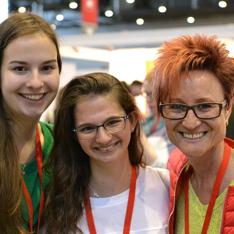Stroke is the second leading cause of disability worldwide, and its burden is rising fast. By 2050, nearly 190 million years of life and disability will be lost to stroke. For physiotherapists working across acute, sub-acute and community settings, the demand for effective, evidence-based rehabilitation is urgent and growing.
In a focused symposium chaired by Rachel Stockley (UK), international leaders in stroke rehabilitation explored how excellence in care is defined, measured and delivered across diverse health systems. The session spotlighted the work of the International Stroke Recovery and Rehabilitation Alliance (ISRRA) and offered practical tools for improving care at both system and service levels.
Thoshenthri Kandasamy (Australia) opened with findings from a global collaboration to define what constitutes a centre of clinical excellence in stroke rehabilitation. “We identified seven aspirational criteria, with 46 indicators and 25 sub-indicators, ranging from optimal outcomes and education to leadership and advocacy,” she explained. A mixed-methods study involving 15 centres found common strengths in interprofessional collaboration and outcome measurement, but ongoing gaps in research translation, mentoring, and advocacy infrastructure. “This framework helps centres identify where they are doing well, and where they can improve,” she said.
John Solomon (India) turned to the challenge of embedding guidelines and innovation in resource-constrained settings. He described the Roundtable Consensus on nine priority areas for stroke service delivery, emphasising interdisciplinary care, local guideline development, therapy dosage, and the role of technology. In India and similar contexts, Solomon’s work is advancing low-cost robotics (like PLUTO and ArmAero) and gamified rehabilitation to deliver more therapy with limited resources. “Technology can help us deliver more care, to more people, with the resources we have,” he said.
Rachel Stockley closed the session with qualitative insights drawn from 45 interviews with healthcare stakeholders. She introduced the RITE Model, an implementation framework developed in the UK to support the adoption of rehabilitation technologies. It considers five interdependent pillars: evidence, technology features and usability, users (staff and patients), team leadership, and organisational readiness. “Innovation isn’t just about having the right tool—it’s about embedding it in the right way,” she said. Her findings highlighted that real-world adoption hinges not just on the technology itself, but on training, team dynamics and local systems.
Together, the presenters reinforced that achieving excellence in stroke rehabilitation goes beyond delivering best-practice care—it requires adaptable frameworks, context-specific tools, and sustained investment in teams and infrastructure. For physiotherapists worldwide, the path forward lies in combining innovation with equity, evidence with empathy, and strategy with local leadership.

